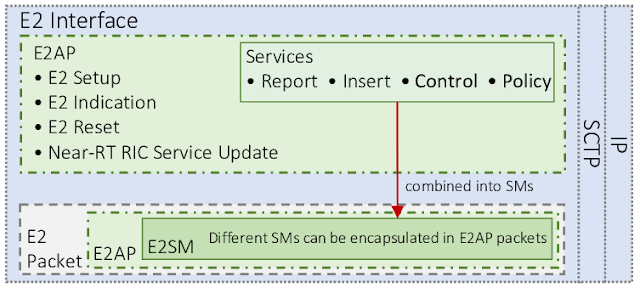[ORAN] FlexRIC Sevice Model (4): Indication 的設計邏輯

在之前的說明中, 我們大致介紹了一個 Service Model (SM) 的建立, 以及所對應要進行的修改流程, 包含: SM 定義, RIC 以及 xApp 部分, 在這篇文章中, 我們會介紹一下其對應的流程以及背後參數設定原因, 首先, 我們先回顧一下在 O-RAN 架構中的 Indication 資料結構, 如下圖所示: 來自: Polese, Michele, et al. "Understanding O-RAN: Architecture, interfaces, algorithms, security, and research challenges." IEEE Communications Surveys & Tutorials (2023). 在 O-RAN 的框架下, 其 Indication (其他型態也是) 傳送的資料結構分成兩層: E2 AP (Application Protocal): 可以視為信封, 標記了識別資訊與註冊流程 E2 SM (Service Model): 可以視為信紙, 收送雙方定義的資料結構 在 FlexRIC 中, 可以找到 xApp 的範例程式如下: https://gitlab.eurecom.fr/mosaic5g/flexric/-/blob/master/examples/xApp/c/monitor/xapp_kpm_moni.c 我們接下來會大略介紹一下程式碼, 並對應於 FlexRIC 的流程圖: 來自: https://gitlab.eurecom.fr/mosaic5g/flexric/-/wikis/Create%20a%20xApp 以下是 xApp 接收 Indication 的程式 (稱為 monitor), 我們取最簡單的 xapp_kpm_moni.c 作為範例, 並以藍字為註解: examples/xApp/c/monitor/xapp_kpm_moni.c #include "../../../../src/xApp/e42_xapp_api.h" // FlexRIC 的 API #include "../../../../src/util/alg_ds/alg/defer.h" #include ...
